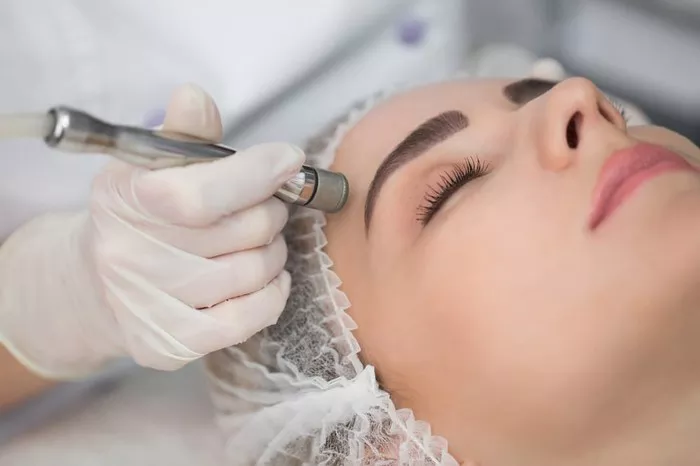Buccal fat pad removal is a cosmetic procedure that involves the removal of the buccal fat pads located in the cheeks. The procedure is gaining popularity among individuals who desire a slimmer and more defined facial appearance. However, like any cosmetic procedure, there are potential risks and drawbacks associated with buccal fat pad removal. In this article, we will explore the benefits and drawbacks of buccal fat pad removal and whether or not you may regret having the procedure done.
What is Buccal Fat Pad Removal?
Buccal fat pad removal is a cosmetic procedure that involves the removal of the buccal fat pads located in the cheeks. These fat pads are responsible for the roundness and fullness of the cheeks, and their removal can result in a slimmer and more defined facial appearance. The procedure is typically performed under local anesthesia, and involves making incisions inside the mouth to remove the buccal fat pads.
Benefits of Buccal Fat Pad Removal
The main benefit of buccal fat pad removal is a slimmer and more defined facial appearance. This can be particularly appealing to individuals who feel that their cheeks are too full or round. Additionally, the procedure is minimally invasive and can be performed on an outpatient basis, meaning that patients can return home the same day as the procedure.
Drawbacks of Buccal Fat Pad Removal
One of the main drawbacks of buccal fat pad removal is the potential for complications. These can include infection, bleeding, and nerve damage. Additionally, the results of the procedure may not be as dramatic as some patients expect, and there is a risk of over-removal, which can result in a sunken or hollow appearance in the cheeks.
Will You Regret Buccal Fat Pad Removal?
The decision to undergo buccal fat pad removal is a personal one, and ultimately depends on your individual goals and expectations. While the procedure can result in a slimmer and more defined facial appearance, it is important to weigh the potential risks and drawbacks before making a decision.
One factor to consider is the permanence of the procedure. Once the buccal fat pads are removed, they cannot be replaced. This means that if you are not happy with the results, there is no going back. Additionally, the results of the procedure may not be as dramatic as you expect, and there is a risk of over-removal, which can result in a sunken or hollow appearance in the cheeks.
Another factor to consider is the potential for complications. While buccal fat pad removal is a minimally invasive procedure, there is still a risk of infection, bleeding, and nerve damage. These complications can be serious and may require additional treatment or surgery to correct.
Ultimately, the decision to undergo buccal fat pad removal should be made after careful consideration of the potential risks and benefits. It is important to have realistic expectations for the results of the procedure and to choose a qualified and experienced surgeon to perform the procedure.
Conclusion
Buccal fat pad removal is a cosmetic procedure that can result in a slimmer and more defined facial appearance. However, like any cosmetic procedure, there are potential risks and drawbacks associated with the procedure. The decision to undergo buccal fat pad removal should be made after careful consideration of the potential risks and benefits, and with realistic expectations for the results of the procedure. If you are considering buccal fat pad removal, it is important to choose a qualified and experienced surgeon to perform the procedure and to discuss any concerns or questions you may have.
FAQs
1. Is buccal fat removal a bad idea?
Buccal fat removal is a cosmetic procedure designed to reduce fullness in the cheeks for a slimmer facial appearance. While it can achieve desired results for some individuals, it’s essential to consider potential risks and benefits, as well as consult with a qualified plastic surgeon to determine if it’s the right option for you. Like any surgical procedure, there are potential risks and complications associated with buccal fat removal, including infection, nerve damage, and dissatisfaction with results.
2. Does buccal fat removal look bad as you age?
The aesthetic outcomes of buccal fat removal can vary depending on individual factors such as skin elasticity, facial structure, and overall aging process. While the procedure can provide a more contoured appearance in the short term, natural aging changes such as volume loss and skin laxity may affect the long-term results. It’s essential to have realistic expectations and discuss potential long-term effects with your surgeon before undergoing buccal fat removal.
3. Is buccal fat removal attractive?
Whether buccal fat removal results in an attractive appearance is subjective and varies from person to person. Some individuals may find a slimmer facial profile more aesthetically pleasing, while others prefer a fuller, more youthful look. Ultimately, the attractiveness of the outcome depends on personal preferences, facial harmony, and the skill of the surgeon in achieving natural-looking results.
4. Can buccal fat pad removal be reversed?
Buccal fat removal is a permanent surgical procedure that involves the removal of fat pads from the cheeks. Once removed, the fat cells do not grow back, and the procedure cannot be reversed. Therefore, it’s crucial to carefully consider your decision and consult with a qualified plastic surgeon to ensure it aligns with your aesthetic goals and expectations.


